Updated January 8. 2022
The absence of a universal worldwide standard for plugs, outlets, voltages, and frequencies presents a number of electrical issues for travellers.
- What will you need to safely use your electronics and electrical appliances when you travel overseas?
- Will their plugs be compatible with wall sockets?
- Could the voltage damage any of your stuff?
Table of Contents
- Tips on travelling with electronics and electrical items
- 1. Understand the basics
- 2. Decide which items to take
- 3. In-ear vs over-head headphones
- 4. Check the electricity guide for each destination
- 5. Check the manufacturers’ ratings
- 6. Do you need a converter?
- 7. Do you need to pack an adapter?
- 8. Universal or individual adapters? Grounded or ungrounded?
- 9. Pack light with one USB charger for all devices
- 10. Organize your chargers
- 11. Choose the right packing organizers
- 12. Organize manuals
- Finally, an old learning moment
Tips on travelling with electronics and electrical items
Use these 12 tips on travelling with electronics and electrical items to decide what you need to pack and help you power up with confidence.
1. Understand the basics
There are plenty of resources to help travellers gain a basic understanding of the worldwide electrical system. One of my favourites, because of its clarity and simplicity, is Lifewire’s International Power Adapters: What you Need to Know.
- It will help you understand the terms ‘current,’ ‘voltage,’ and ‘frequency,’ and how they relate to travel.
- It will explain the key differences between an adapter, converter, and transformer.
- You’ll learn how to decipher the electrical ratings on the manufacturer’s label on your gadgets, and what they mean for using them abroad.
2. Decide which items to take
Scrutinize each electronic gadget and electrical appliance. Packing the appliances you use at home can become a liability if you need special equipment to use them, or it leads to overpacking.
- Do you need your camera, or will the one on your smartphone do?
- Will you use your e-reader enough to warrant packing it, or will your tablet meet your short-term needs?
- Do you really need a hairdryer? If so, are they supplied where you’ll be staying? If they’re not supplied, can you make do with a travel-sized container of a volumizing or sculpting product?
- Can you do without a hair straightener or curling iron? You could buy one at your destination, but what will become of it when it’s time to move on?
- Will you need your electric toothbrush or shaver, or are there lighter and less complicated alternatives?
For items that are non-negotiable, consider investing in gadgets and appliances that are compatible with your present and future travel needs. For example:
- A small tablet such as an iPad mini can be useful for travellers who don’t need to take a laptop to get some work done.
- Dual-voltage models of hairdryers, curling irons, and hair straighteners mean that a converter won’t be needed.
- USB- and battery-powered travel toothbrushes and shavers are light and functional, and don’t need a converter.
3. In-ear vs over-head headphones
Noise-cancelling headphones serve a useful purpose, especially on long flights. I replaced mine with in-ear noise-cancelling headphones when I realized the over-head headphones stayed packed when I wasn’t flying. In-ear headphones are much more portable, and consume a fraction of the space and weight demands of the over-head variety.
I use my BOSE QuietComfort 20 Acoustic Noise Cancelling Headphones way more than when I travelled with over-head headphones. The same applies to the cordless and more portable AirPods Pro that have also earned a permanent place on my packing list.
4. Check the electricity guide for each destination
Check the power ratings in voltage (V) and frequency (Hz) of each country on your itinerary. Don’t forget about the countries while in transit when you’ll likely want to use and recharge your devices. Wikipedia has a handy chart, organized alphabetically by country, listing voltage, frequency and plug types.
5. Check the manufacturers’ ratings
Most electronic equipment on the market today supports the full range of voltages used around the globe – from 110-120 V to 220-240 V. Needless to say, always check the manufacturer’s rating for each device you plan to take.
For example, this is the manufacturer’s rating label on my USB travel charger. I tend to pack this for most trips and leave my devices’ power bricks at home.
When travelling to Italy, for example, I know that the voltage and frequency are 230V and 50Hz. As the charger’s input is rated as multi-voltage (90-240V), it can handle both Canadian (120V 60Hz) and European power.
6. Do you need a converter?
Electrical appliances travellers tend to pack — hairdryers, curling irons, hair straighteners, shavers, electric toothbrushes, and travelling irons — unless they’re dual voltage, don’t support the range of worldwide voltages. If it’s not an option to leave these kinds of items at home, a converter may be required.
7. Do you need to pack an adapter?
Probably. An adapter allows a gadget’s plug from one country to fit into an outlet of another country. It doesn’t convert electricity. Look up information on plug types needed for power outlets of each country on your itinerary, including the ones in transit. Wikipedia has a useful chart. The app Plugs of the World is a handy quick reference with pictures of plug types and sockets.
8. Universal or individual adapters? Grounded or ungrounded?
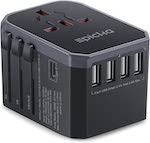 Do you prefer an adapter kit with five separate pieces, or a universal kit where the five different plug types are built into a single unit. A universal kit might be a better choice for those on a Round-The-World trip. An advantage of a kit is that you need to pack only the adapters that are needed. Also, you may find that individual adapters tend to fit more snugly in the wall socket or power bar than the bulkier universal varieties.
Do you prefer an adapter kit with five separate pieces, or a universal kit where the five different plug types are built into a single unit. A universal kit might be a better choice for those on a Round-The-World trip. An advantage of a kit is that you need to pack only the adapters that are needed. Also, you may find that individual adapters tend to fit more snugly in the wall socket or power bar than the bulkier universal varieties.
The power brick of each of your gadgets likely has a two-pronged plug so two-pronged (ungrounded) adapters will suffice. If your laptop has a three-pronged (grounded) plug, you may need an adapter to accommodate the three-pronged plug of your laptop.
9. Pack light with one USB charger for all devices
On a trip to New Zealand a few years ago, there was just one outlet in our rented camper van. Even with a four-plug power bar, there was lots of competition each evening to charge the various gadgets of our three-person group.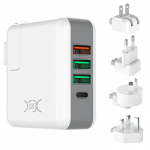
With a USB to AC international charger, it’s possible to charge several devices off one wall socket. The advantages of travelling with this type of charger, and desirable features, are described in Pack light with a USB to AC international travel charger.
10. Organize your chargers
Consider tagging each removable cord with a durable label, and using colour-coded clips or ties to keep them organized.
- These provide peace of mind that each cord can be quickly matched with the right gadget. You won’t unwittingly damage something by trying to insert the wrong cord into the wrong device.
- With your cords in their packing organizer or hanging from their respective USB port, it’s easier to grab the right cord for the right gadget requiring the right wattage.
- It also allows you to more quickly check off each charger and/or its cord on your packing list, so none are left behind.
- To reduce cable clutter, consider adding a small keyring charger to electronics kit. For more information, see my inCharge X keyring charging cable review of a tech favourite.
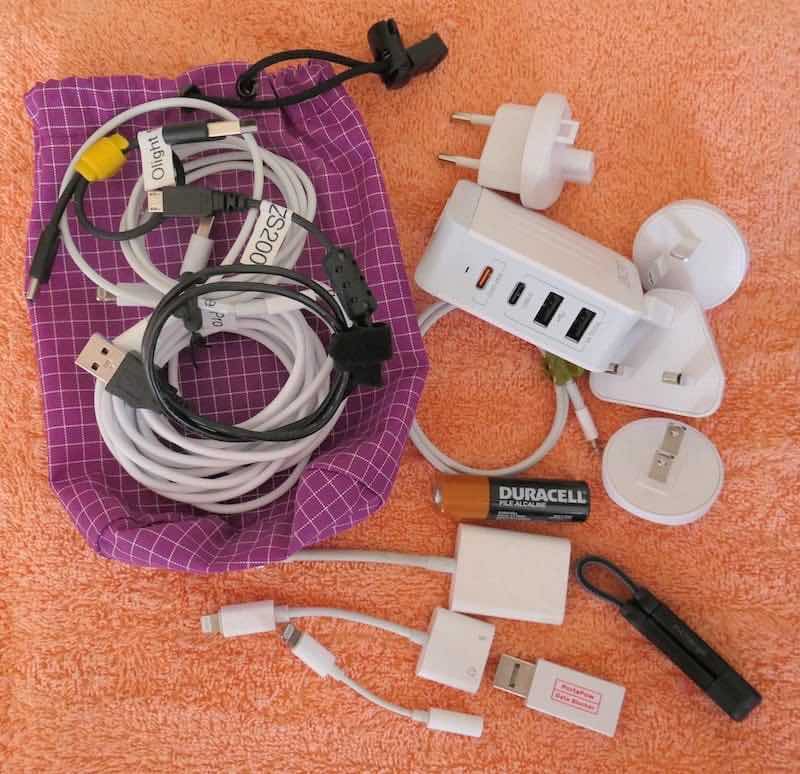
11. Choose the right packing organizers
A packing organizer provides a safe haven for your charging tools, keeping them, and you, organized. The right packing organizer(s) will depend on several factors:
- total weight and space demands of your chargers
- what else you’ll pack with them (e.g., hard drive, external charger, memory cards, SIM card tools, in-ear-headphones, other phone/tablet/laptop accessories)
- desirable features (e.g., padded, waterproof)
- is as lightweight as possible, without sacrificing quality and durability
- is a good fit with your luggage
- how you’ll easily access what’s packed in different travelling scenarios
Many travellers use an organizer board or zippered packing cube for all charging tools and related accessories. Common features include reinforced backing, pockets, and elasticized strapping to keep individual items in place. An advantage is that everything is in a single packing organizer. A disadvantage is that there will be situations when just one or two items are needed and carrying around superfluous stuff is inconvenient.
My preference is to use a drawstring stuff sack for most charging tools, and separate pouches for individual items such as in-ear headphones and an external battery pack. Packing the pouch containing the external battery pack (and its charger and short charging cord to charge a device) for a long travel day is lighter and demands less space than an organizer packed with lots of other items.
The same applies to noise-cancelling headphones (with the charging cord, Lightning to jack adapter and dual-port dongle for a charging cord and headphone jack). A small pouch containing these items takes up little space in an in-flight personal bag.
12. Organize manuals
Most user guides, manuals, and information sheets for your gadgets and accessories are available online. Consider placing them in a file storage system such as Dropbox. If you need to troubleshoot or look something up, you’ll appreciate having them at your disposal.
Finally, an old learning moment
I’m embarrassed to tell this story, but here goes.
A few decades ago, I took a Waterpik to Australia from Canada. Why pack a Waterpik you may ask??? Following jaw surgery, my spouse had a considerable amount of metal in his mouth, and a Waterpik helped keep things clean. It was an era before ready access to the internet, and we couldn’t easily find out if we could purchase one there.
On arrival, we plugged it in with the help of an Australian adapter. After some smoke and a few sparks, that was the end of it. The 240 volts of Australian power were just too much for our 110 volt-rated Canadian appliance. We hadn’t done our research and packed a converter. Thankfully, that lesson was a relatively inexpensive one.
Avoid having any of your gadgets meet a similar fate as that long-deceased Waterpik. Develop a little electrical know-how and ensure you pack what’s needed to power up with confidence.
If you found this post helpful, please share it by selecting one or more social media buttons. What other tips can you add to travel safely with electronics and electrical gadgets? Please add your thoughts in the comments. Thank you.
Care to pin it for later?
Some of the links on this page are affiliate links. If you use them to buy something, you don’t pay more, but this website earns a small commission, which helps pay the cost of running the site. Thank you for your support.


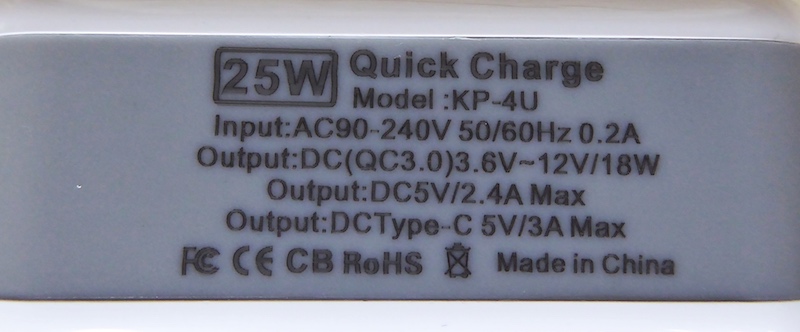
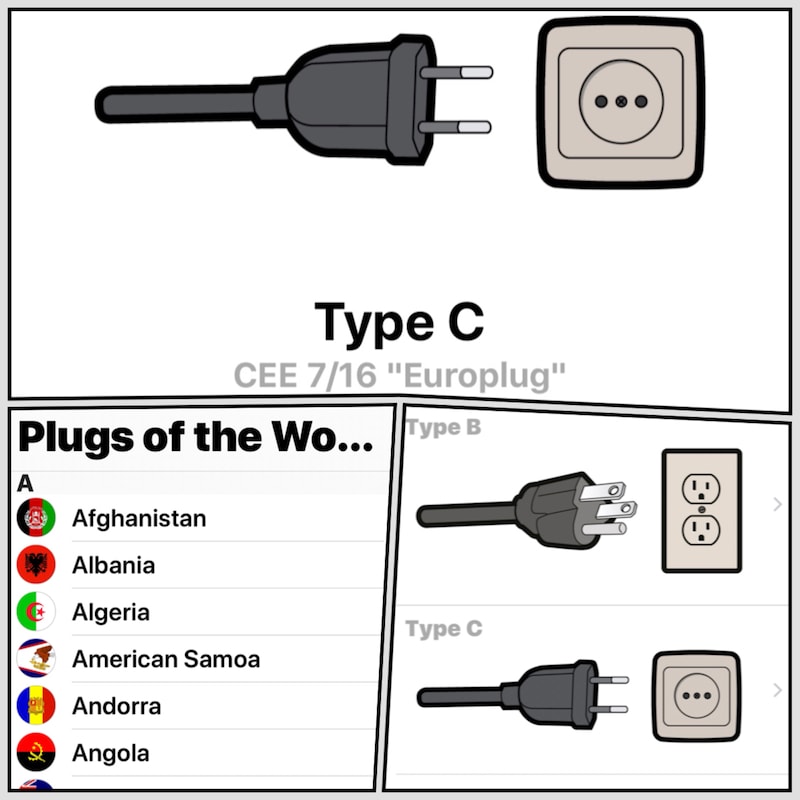
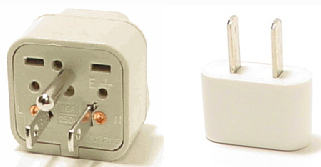
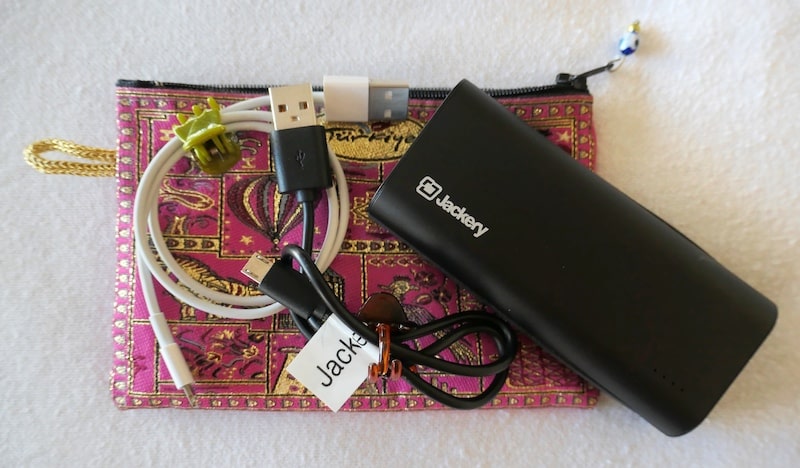
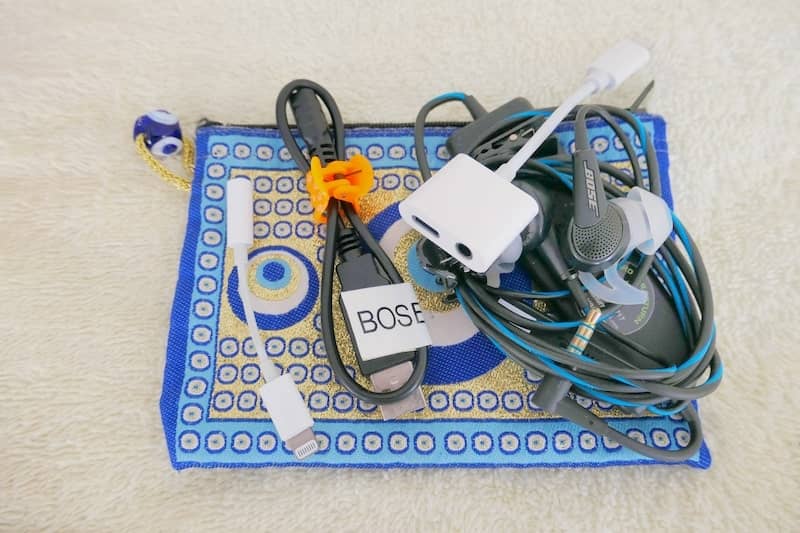
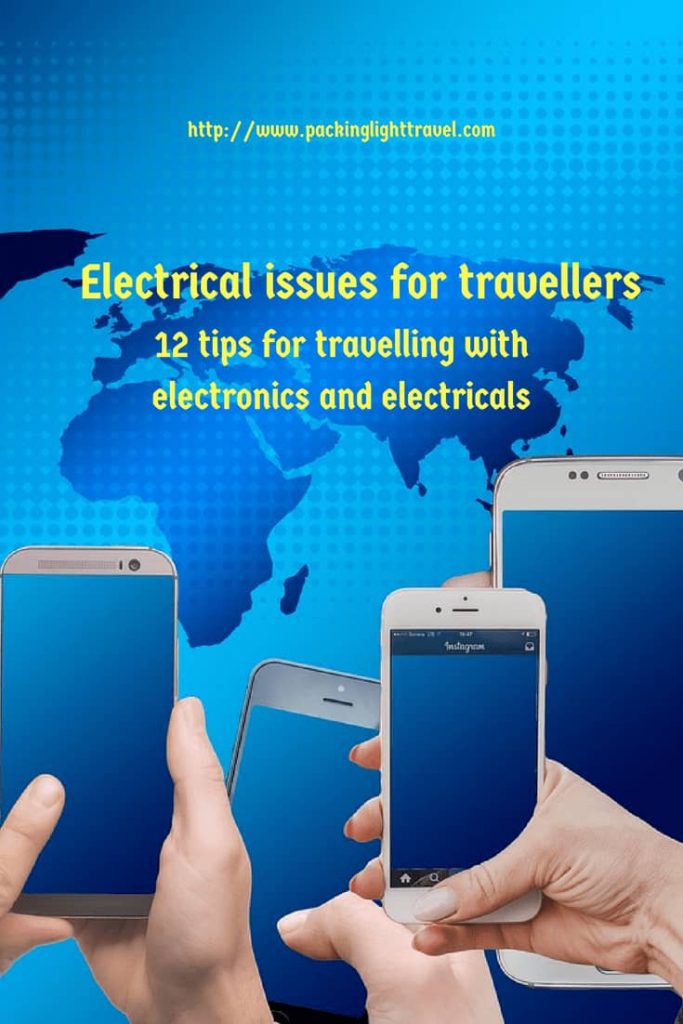




Trying to deal with electricity while you are on vacation can be a pretty big struggle. It is definitely a good idea to keep all of your power cords as organized as possible. By doing this you can make sure that they don’t get lost or tangled. This is especially a good idea for when you are trying to travel around a different country.
Good advice for dealing with electrical issues while traveling. Having a converter is always a good idea so do your research before hitting the road. Thanks so much for sharing!
Drew recently posted…Lighting Electrician
I agree that you should always be aware of the electricity power ratings for wherever you’re at. Otherwise, you won’t be able to get devices to work. Plus, you may run the risk of getting electrocuted.
Solid counsel for managing electrical issues while voyaging. Having a converter is dependably a smart thought so do your examination before taking off. Much obliged such a great amount for sharing!
I too have fried a USA Waterpik….in France…now in Australia with a new USA Waterpik….finally found an appropriate power converter…..took it out of the box and warning label announces “not to be used with anything dental/handheld/involving water”!! Is this for real or “over-the-top caution”?
While we were visiting Malta we were so pleased to see that there was a hairdryer in the condo we were renting….it had European electrical fittings…Malta had UK electrical outlets…we had adapters for European and for UK but not European to UK as we were from Canada…..bought what was required but it is always good to expect the unexpected.
Nice post Anne. This is something we usually don’t think of when we travel.
Interesting post. This is indeed something not usually brought to topic when traveling since we usually thought of this not an issue (at least for me) but after reading your post, it makes me think. Thanks for sharing this, Anne!
I wish I’d read this before we headed to Europe last fall. The first few days were like an electrical easter egg hunt.Yikes!
I’ll definitely be checking in here for travel prep before my next trip!
I agree that you should always be aware of the electricity power ratings for wherever you’re at. Otherwise, you won’t be able to get devices to work. Plus, you may run the risk of getting electrocuted.
Hey Anne! This is just one of the most helpful post I’ve read about traveling. I have never been too keen when it comes to electrical issues when traveling. I just have a universal adapter and that’s it. I should check on manufacturers’ ratings from now on. Thank you so much for sharing. Cheers!
Doctear recently posted…Etymotic vs Earpeace HD Musician Earplugs
This is a fascinating article. This is something that isn’t generally brought up when traveling because we usually don’t consider it to be an issue (at least not for me), but after reading your piece, it has made me think. Thank you for providing this information.
This provides an excellent overview of the electrical considerations for travelers. It’s crucial to understand the basics of voltage, frequency, and plug compatibility to avoid any damage to your electronics. The tips on deciding which items to pack and investing in compatible gadgets are practical and efficient ways to streamline your travel essentials. The suggestion to switch to in-ear noise-canceling headphones and use a USB charger for multiple devices are particularly helpful. Additionally, the emphasis on checking power ratings, manufacturers’ specifications, and the need for converters and adapters are crucial for a smooth travel experience.
I once made the mistake of not checking the power ratings and ended up frying my camera in a foreign country. It was a devastating experience and taught me the importance of understanding voltage and frequency compatibility. Since then, I’ve invested in dual-voltage gadgets and always carry the necessary adapters and converters to avoid any more mishaps. Traveling with electronics can be tricky, but with these tips, I feel much more confident and prepared.
Anne Betts’ comprehensive guide on traveling with electronics is a lifesaver! Her personal anecdotes, like the Waterpik mishap, add a relatable touch and drive home the importance of understanding electrical needs abroad. The detailed tips, from choosing between in-ear and over-head headphones to the wisdom of packing light with a USB charger, make this a must-read for any tech-savvy traveler. I’ll definitely be organizing my chargers and checking manufacturers’ ratings before my next trip, thanks to Anne’s practical advice.
The article provides invaluable insights into managing electrical challenges while traveling, offering practical tips and a comprehensive guide. It’s a must-read for anyone seeking a hassle-free experience with their electronics abroad, making me feel more confident and prepared for my future travels.
These tips for traveling with electronics are really helpful! They cover everything from keeping your devices safe and charged to packing them securely. It’s important to follow these tips to avoid any problems during your trip and ensure that your gadgets stay in good condition. Thanks for sharing these useful tips!
Anne, this is a fantastic and very practical guide! Your tips on organizing and deciding which electronics to take are incredibly helpful. I especially appreciate the advice on in-ear versus over-head headphones and the reminder to check voltage compatibility to avoid mishaps. Your personal anecdote about the Waterpik in Australia adds a relatable touch and emphasizes the importance of being prepared. Thank you for sharing these valuable insights!
Super helpful tips—thank you! I always second-guess what electronics to bring and how to power them safely abroad. Love the reminder to check manufacturer ratings and the plug type app rec—adding that to my phone now!